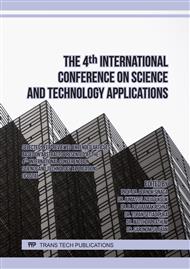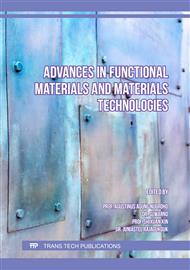p.115
p.121
p.131
p.139
p.145
p.153
p.165
p.173
p.183
Manufacturing and Characterization of Polymer Concrete with Aggregate from Sand, Egg Shell and Sugarcane Waste with Epoxy Resin Binder as Sound Absorber
Abstract:
Environmentally friendly polymer concrete by utilizing waste has been widely developed, one of which is sugarcane fiber waste and egg shell powder. Utilization of this waste is not optimal, for that by being used as a filler in polymer concrete, it is expected that it will have a higher economic value. This study was to determine the composition of the epoxy resin binder and the mechanical characteristics of polymer concrete fabricated using sugarcane fiber waste with an epoxy resin adhesive. Variations in composition made of sand, egg shells (1 : 1) or (50 g : 50g), bagasse waste 0%, 1%, 2%, 3%, 4% and 5% of the total weight. Epoxy resin composition variation of 20%, 25% and 30% of the total weight of sand and egg shells. Then carried out the characteristics in the form of density test, water absorption, porosity, compressive strength and tensile strength. From the test results, the characteristics of polymer concrete have optimum values, namely density (1.76 g/cm3), water absorption (4.04%), porosity (5,252%), compressive strength (26,27 MPa), tensile strength (4,06 MPa). Of the three samples, the best in the A5 sample with a sound absorption coefficient of 0.237 met the requirements of ISO and ASTM C.384.
Info:
Periodical:
Pages:
173-181
Citation:
Online since:
January 2023
Authors:
Keywords:
Price:
Сopyright:
© 2023 Trans Tech Publications Ltd. All Rights Reserved
Share:
Citation:



